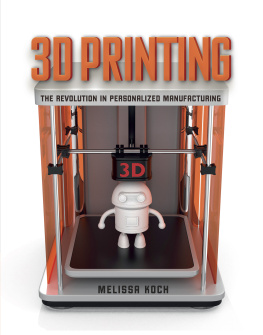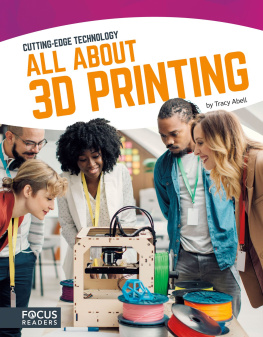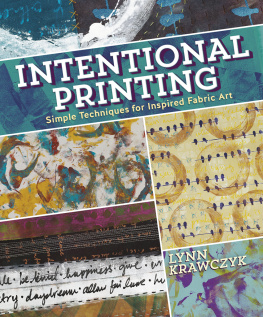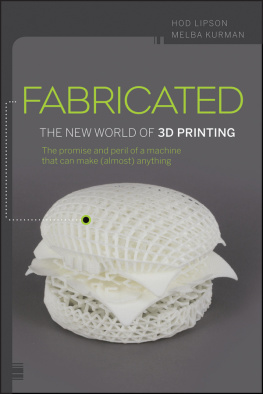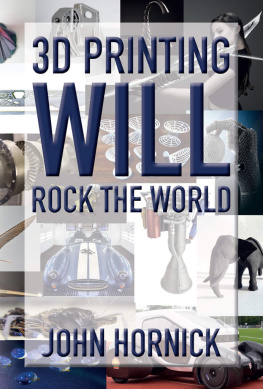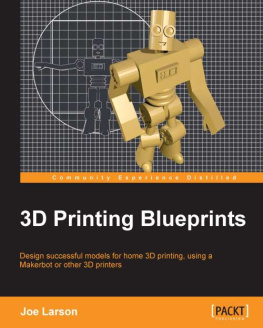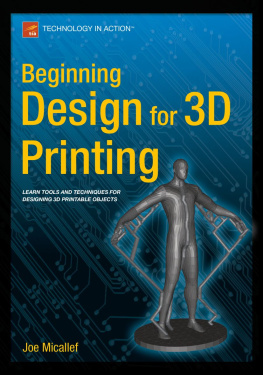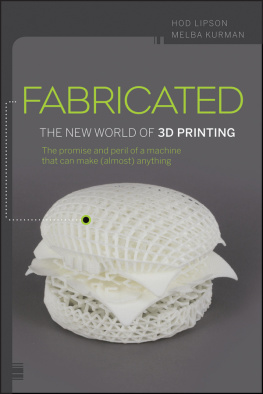3D PRINTING WILL
ROCK THE WORLD
3D PRINTING WILL
ROCK THE WORLD
John Hornick
Copyright 2015 John Hornick
All rights reserved.
ISBN: 1516946790
ISBN 13: 9781516946792
Library of Congress Control Number: 2015913412
CreateSpace Independent Publishing Platform
North Charleston, South Carolina
Dedicated
to Sarah,
my wife, best friend, and great love
and
to Phyllis,
who gave me life
Contents
Foreword
H uman history has seen four major disruptive technologies. First there was fire, then the wheel. Then came the Industrial Revolution, followed by the digital revolution. When these technologies emerged, no one foresaw their full potential. For example, at the dawn of the digital revolution, IBMs chairman and CEO, Tom Watson, foresaw a world market for no more than five computers. Digital Equipment Corporations founder, Ken Olsen, said there was no reason anyone would ever need a computer in the home. At the time, these were the best predictions of the potential uses of a home computer. How little they knew, and how fast we learned.
Then came the Internet, which has been in widespread public use since only around the mid-1990s. In those early days, few people saw its potential. Even today we are still discovering its power. Only a few years ago, many people wondered why they needed a smartphone. In a short time, smartphones have become indispensable to our daily lives.
Although 3D printers have been with us for about thirty years, they are still in their infancy and are just starting to cross into the mainstream. Both companies and consumers are wondering how to use them. The people who will figure it out are the innovators of tomorrowmost of whom are kids todayand they will figure it out fast.
This book is a thought experiment about what could be, not what should be. It is written with conviction because it is my vision of how 3D printing can change the world. But my crystal ball is not perfect. Of course I dont know with certainty how 3D printers will change the planet, but as Albert Einstein once said, Imagination is more important than knowledge. It is less important to be right than to stimulate people to think about these issues in new ways.
As you read this book, think about the implications of 3D printing for your life, your job, your company, your country, and the world. Think about the things I have not thought of. Think outside the box.
Morphing Manufacturing
ONE MACHINE DOES IT ALL
D printers are the most powerful machines humans have ever invented because they can make finished products, with all their parts, fully assembled. Driven by a digital blueprint, they build layer upon layer of plastic, metal, or other materials and then fuse them with heat, lasers, electron beams, chemicals, ultrasound, or glue.
Most of the products we use every day are made of many parts. They result from many manufacturing steps performed by different machines, each with its own operator. Each machine and operator does a certain job, such as cutting, grinding, drilling, or milling, then passes the part to another machine and operator that perform another job, and on and on along an assembly line until the part is complete. Eventually, all of the parts are assembled into a final product, either by machine or by hand.
3D printing rocks manufacturing by replacing all of these steps with fundamentally different machines and materials that substantially simplify the manufacturing process, reducing its costs and carbon footprint and eliminating the need for economies of scale.
According to the Brookings Institution think tank, 3D printing will no doubt revolutionize manufacturing and usher in a new wave of innovation. Combined with advanced materials, 3D printing is the Holy Grail of manufacturing.
Big companies are using 3D printing to revolutionize manufacturing: Airbus, Boeing, GE, Johnson Controls. Boeing says, This is the ultimate manufacturing method for us,
Take a [car] door panel with 11 different materials, 20 different components, produced in different parts of the country, being brought together and assembled in this one plant, with a lot of tools, with a lot of equipment, with a lot of process steps. Now turn this into a situation where you have one printer printing those 12 different materials, those 20 different components, assembled all at once.
3D printing does two seemingly inconsistent things at the same time: it simplifies and streamlines manufacturing while enabling the flexible manufacture of fully assembled, infinitely customizable products, without barriers to complexity, and reduces the economy of scale to a batch of one.
THE NAME GAME
3D printing is also called additive manufacturing, direct digital manufacturing, and a few other variations. For many years after its invention in the 1980s,formal names, but lets face it, 3D printing is sexier. Which machine would you rather see, my cool new additive manufacturing machine or my cool new 3D printer? And which college course will fill faster: 3D Printing 101 or Additive Manufacturing 101?
3D printing is also easier to say. I recently sat in a roomful of experts in this field, who constructed the most torturous sentences with additive manufacturing. After someone broke the ice by saying 3D printing, the discussion loosened up and was much more productive. Calling it 3D printing will help drive adoption and spread the technology much faster than additive manufacturing.
3D printing also captures the essence of this revolutionary technology more accurately than additive manufacturing. Some people refer to traditional methods as subtractive manufacturing, which makes a nice symmetry with additive manufacturing. Some people also use subtractive to refer to old methods and machines and additive to refer to new ones. But some traditional processes, such as metal casting, plastic injection molding, and textile weaving, are both additive and old. So the additive versus subtractive and old versus new distinctions are not accurate. In this book, I use additive manufacturing to refer only to 3D printing. Other processes I refer to as traditional methods and traditional machines.
CUSTOMIZATION AND COMPLEXITY ARE FREE
The strength of traditional manufacturing methods is their ability to mass-produce a thousand or a million parts, all exactly the same. Traditional methods are more and more efficient as more and more identical parts are made. As tooling costs are spread over more and more parts, the cost of making each part is reduced. Traditional machines can be used to make customized products, but costs increase with the degree of customization because the cost of tooling for custom parts is spread over far fewer parts, and such tooling needs to be changed for the customized steps. Custom parts usually also require more human labor, and labor adds cost to the finished part. By Unlike at any other time in history, manufacturers now can obtain the same economies of scale producing either one-of-a-kind parts or mass-produced parts.
Similarly, with 3D printing, complexity is essentially free. The only cost difference between 3D printing a simple part and a complex part is the cost of the raw materials and maybe the postprinting processing. 3D printing dramatically lowers the cost of complexity.
LOWER ALL-IN COSTS
3D printing also uses raw materials efficiently because it does not involve machining away most of the material to yield a finished part. It starts with raw material, such as spools of plastic filament or plastic or metal powders, and uses only as much as is needed. No waste. Also, less labor is needed because an entire part can be printed by a single machine. In fact, a few skilled operators can run a roomful of 3D printers, and soon the operators will be running advanced robots that run the printers. Adding to these economies is 3D printings greater energy efficiency; less energy is used because fewer manufacturing steps are involved.
Next page

